A Deep Dive into High-Speed Data Center Interconnects: A Field Guide for Engineers on DACs, AOCs & Optical Transceivers
Your Survival Guide to the 100G+ Data Center: Choosing Between DAC, AOC, and Optical Transceivers.
Table of Contents
- Chapter 1: The Brutal Laws of High-Speed Physics
- Chapter 2: The Fine Art of Breaking Out
- Chapter 3: Real-World Scenarios, Real-World Choices
- Chapter 4: The Compatibility Minefield
- Chapter 5: The Future Battlefield
- Conclusion: Stop Reading Spec Sheets. Start Thinking Like an Engineer.
- Appendix A: Glossary of Key Terms
- Appendix B: References & Further Reading
(Introduction)
Forget the high-level strategy guides for managers. This one's for you—the engineer in the trenches at 2 AM, trying to figure out why a brand new 400G link won't light up. We're not here to answer "what should I choose?" We're here to answer the real question: "How do I make this stuff work, and how do I fix it when it breaks?" Welcome to the real world. This is your survival guide.
Chapter 1: The Brutal Laws of High-Speed Physics
1.1 Signal Integrity (SI) & The PAM4 Minefield
Forget the simple on/off world of NRZ that got us through the 10G era. Once you cross into 100G-per-lane territory, you're in the land of PAM4. What is it? Think of it this way: instead of just a '0' or a '1', the signal now has four distinct levels, cramming two bits of data into the time it used to take for one. This trick doubles your bandwidth, but here's the brutal catch—it makes the signal incredibly fragile. The slightest noise or signal degradation that your old copper cables would have shrugged off can now throw the entire link into chaos.
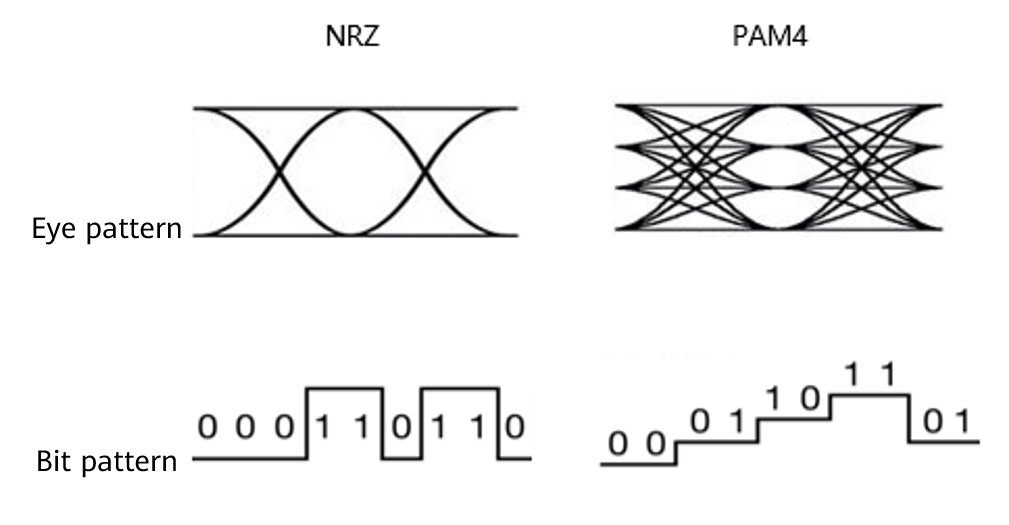
1.2 FEC: Your Best Friend and Worst Enemy
So, how do we fight back against the chaos of PAM4? With FEC (Forward Error Correction). It's a clever algorithm that's always running, catching and fixing errors on the fly, making a noisy link look clean. But don't be fooled. FEC is a patch, not a fix. It adds latency—anywhere from tens to hundreds of nanoseconds. For a high-performance computing cluster, that's an eternity. You have to know: is your link genuinely solid, or is it just FEC working overtime to hide a deeper problem?
1.3 Power & Heat: The Enemy You Can't See
Let's talk about the real killer in a dense rack: heat. Every watt counts, and high-speed optics are hungry. An 800G transceiver isn't just a component; it's a 15-20 watt space heater. Now multiply that by 32 ports on a single switch. You're not just running a network; you're fighting a thermal war. This is where copper, for all its flaws, still wins in the rack.
| Interconnect Solution | 100G Typical Power | 400G Typical Power | 800G Typical Power |
|---|---|---|---|
| Passive DAC | < 0.5W | < 1W | < 1.5W |
| Active AEC | 2W - 3W | 4W - 5W | 6W - 8W |
| SR Transceiver | 1.5W - 2.5W | 6W - 8W | 12W - 15W |
| DR/FR/LR Transceiver | 3.5W - 4.5W | 8W - 12W | 16W - 22W |
Source: Aggregated from QSFP-DD MSA hardware specifications and datasheets from vendors like Finisar/Broadcom.
1.4 The End of the Road for DACs, and the Rise of AECs
The laws of physics are cruel. As NVIDIA showed at GTC 2024, a passive copper DAC at 400G is basically useless past 2 or 3 meters. The signal just falls apart. So what do you do when you need to connect to the next rack over? You call in the AEC (Active Electrical Cable). It's a DAC with a brain—a tiny re-timer chip in the head that cleans up and boosts the signal, pushing copper's reach to a respectable 5-7 meters. It's your go-to tactical weapon for short-haul copper runs.
Chapter 2: The Fine Art of Breaking Out
2.1 Parallel vs. Serial Optics: The Mistake That Will Get You Fired
Want to turn one 100G port into four 25G ports? You need breakout cables. But here's a rookie mistake that will cost you thousands: you can only break out transceivers that use parallel optics. Think 100GBASE-SR4 or PSM4. These modules have multiple lanes of fiber running in parallel. A 100GBASE-LR4 module, on the other hand, uses WDM to cleverly stack all four lanes onto a single fiber. Try to break that out, and you'll get nothing. Know the difference, or prepare for a very awkward conversation with your boss.
2.2 The MPO Connector: Don't Get Pinned
The key to parallel optics is the MPO (Multi-fiber Push-on) connector. It's a small connector packing a big punch—usually 12 tiny fibers. For a 100G-SR4 link, it uses 8 of those fibers: four for sending, four for receiving.

Chapter 3: Real-World Scenarios, Real-World Choices
3.1 The EMI Gauntlet
Ever tried to run a copper cable through a factory floor or near a power generator? It's a great way to build an antenna for every bit of electromagnetic noise in the building. In high-EMI environments, don't even think about it. Fiber and AOCs are your only sane choices because light simply doesn't care about magnetic fields.
3.2 The Hyperscaler's Secret: When AOCs Beat Modularity
We're all taught that modularity (transceivers + fiber) is king. But if you're deploying 10,000 servers in a pod, do you really want to manage 20,000 transceivers and 10,000 cables, all with their own potential failure points? No. As one hyperscaler admitted at an OCP summit, they use fixed-length AOCs. Why? Because it's repeatable, fast, and idiot-proof. It cuts deployment time by two-thirds and practically eliminates on-site connection errors. Sometimes, "all-in-one" isn't a bug; it's a feature.
3.3 The E-Waste Problem No One Talks About
Here's the dirty secret of DACs and AOCs: when they die, the whole thing goes in the trash. A modular approach is greener. That fiber patch cable you bought five years ago? It's probably still perfectly good for your next-gen upgrade. You just swap the modules at the ends. Over the life of a data center, that adds up to a lot less e-waste and a lower long-term TCO.
Chapter 4: The Compatibility Minefield
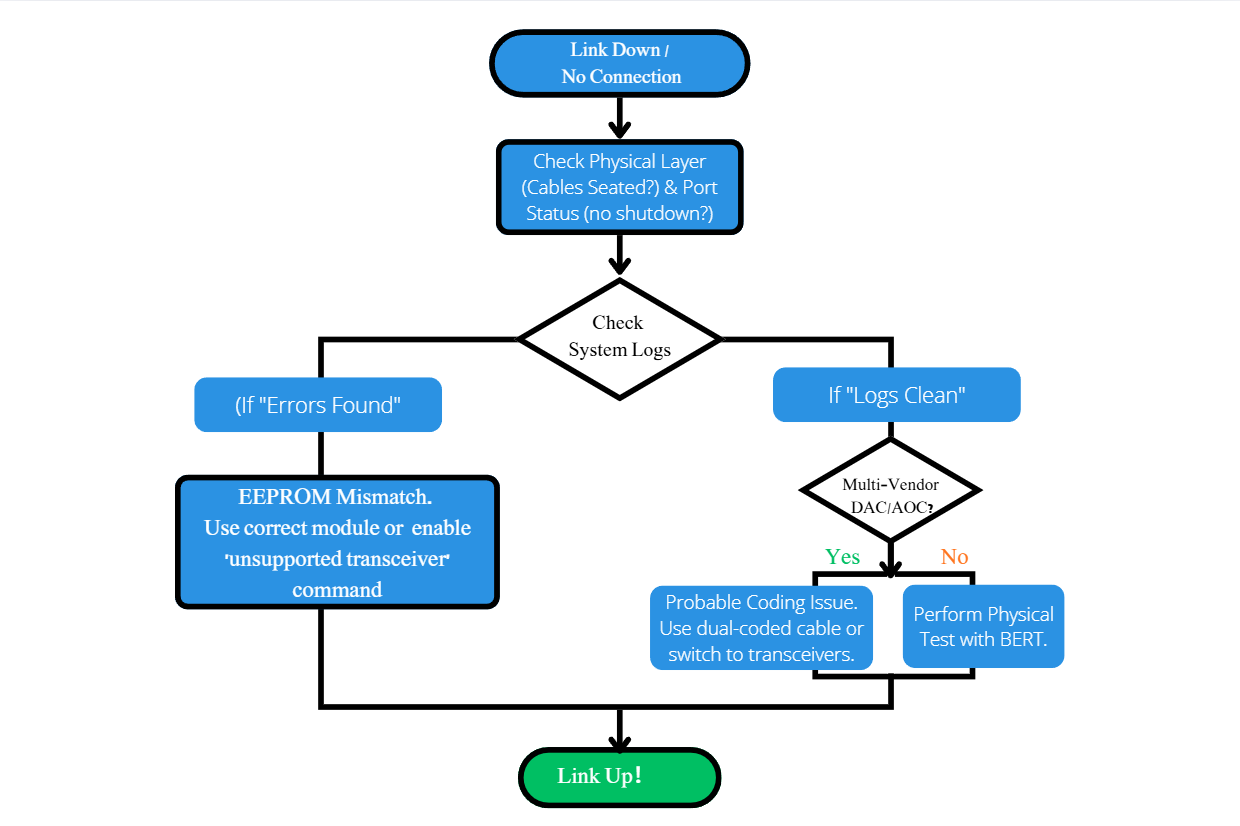
4.1 The EEPROM Handcuffs
Ever plugged in a third-party transceiver and had the switch port immediately shut down? Welcome to the world of EEPROM coding. Vendors like Cisco lock their hardware to only accept their "approved" optics. It's a business tactic, plain and simple. Your job is to know the workaround. For Cisco, service unsupported-transceiver is the magic command that can save your day (and your budget).
4.2 The Multi-Vendor Nightmare and Your Secret Weapon
Connecting a Cisco switch to an Intel NIC with a DAC? Good luck. The cable is probably coded for Cisco and the Intel NIC will pretend it doesn't exist. The safest bet is always transceivers. But if you must use a cable, demand a "dual-coded" one from your supplier. And when things get really weird? Don't just guess. Use a BERT (Bit Error Rate Tester). It's the professional tool for finding out if your problem is a compatibility issue or a genuine physical layer fault.
Chapter 5: The Future Battlefield
5.1 CPO vs. Pluggables: The Big Debate
The next big war in data center hardware is CPO (Co-Packaged Optics) versus the pluggable modules we know and love. CPO puts the optics right next to the switch chip, slashing power consumption by 30% or more. The catch? You can't service it. If an optic dies, the whole switch is a brick. Expect to see CPO start showing up in the 51.2T switch generation around 2026, but don't expect pluggables to disappear overnight.
5.2 LPO: The Power-Saving Middle Ground
What if you could get most of the power savings of CPO with the flexibility of pluggables? That's the promise of LPO (Linear Pluggable Optics). It's a new type of module that rips out the power-hungry DSP chip and lets the switch ASIC do the heavy lifting. It's a risky, cutting-edge play that's gaining traction in the AI world where every watt is precious.
5.3 The Road to 1.6 Terabit Ethernet
Think 800G is fast? The engineers at the IEEE are already hammering out the standards for 1.6 Terabit Ethernet (IEEE 802.3df). They're figuring out how to push 200G over a single lane. Keep an eye on these standards. They tell you where the industry is heading next.
Conclusion: Stop Reading Spec Sheets. Start Thinking Like an Engineer.
Successful networking isn't about picking the fastest part number. It's about understanding the trade-offs. It's knowing that PAM4 is fragile, that FEC adds latency, that LR4 can't be broken out, and that sometimes, a "dumb" AOC is smarter than a "flexible" module. This guide isn't meant to give you all the answers. It's meant to give you the right questions to ask.
Appendix A: Glossary of Key Terms
- AEC: Active Electrical Cable
- BERT: Bit Error Rate Tester
- CPO: Co-Packaged Optics
- FEC: Forward Error Correction
- LPO: Linear Pluggable Optics
- MPO: Multi-fiber Push-on
- PAM4: Pulse Amplitude Modulation 4-level
- WDM: Wavelength Division Multiplexing
Appendix B: References & Further Reading
- IEEE Std 802.3df-202x (Draft) - "Ethernet Amendment: 800 Gb/s and 1.6 Tb/s Operation." (URL: https://www.ieee802.org/3/df/)
- QSFP-DD MSA HW Specification, Rev 6.01, "QSFP Double Density 8X Pluggable Transceiver." (URL: https://www.qsfp-dd.com/wp-content/uploads/2021/05/QSFP-DD-Hardware-Rev6.01.pdf)
- NVIDIA Technical Presentation (GTC 2024), "Scaling AI Fabrics with Spectrum-X," Session S62191.
- Open Compute Project (OCP) Global Summit 2023, "Networking Track: Operational Challenges in Hyperscale Deployments."
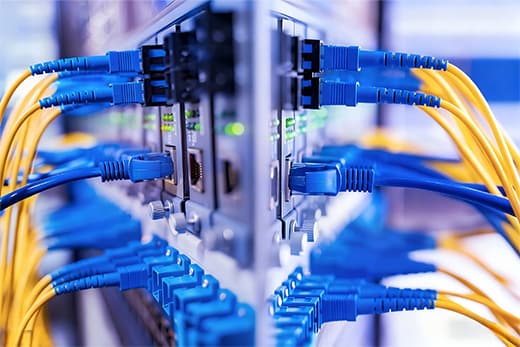 The Field Guide to Fiber Optic Network Upgrades: An Engineer's Pre-Procurement Checklist
The Field Guide to Fiber Optic Network Upgrades: An Engineer's Pre-Procurement Checklist
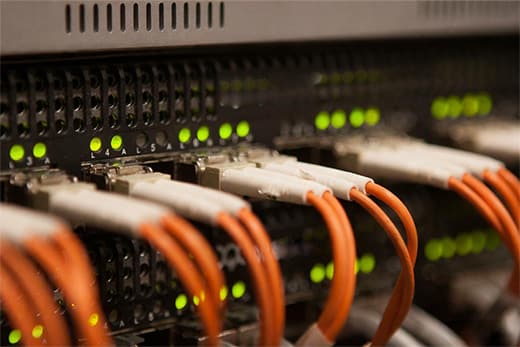 A Deep Dive into High-Speed Data Center Interconnects: A Field Guide for Engineers on DACs, AOCs & Optical Transceivers
A Deep Dive into High-Speed Data Center Interconnects: A Field Guide for Engineers on DACs, AOCs & Optical Transceivers
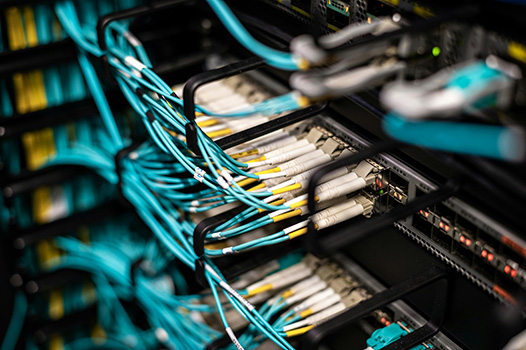 The Ultimate "In-Rack" Showdown: DAC vs. Transceivers vs. AOCs
The Ultimate "In-Rack" Showdown: DAC vs. Transceivers vs. AOCs

